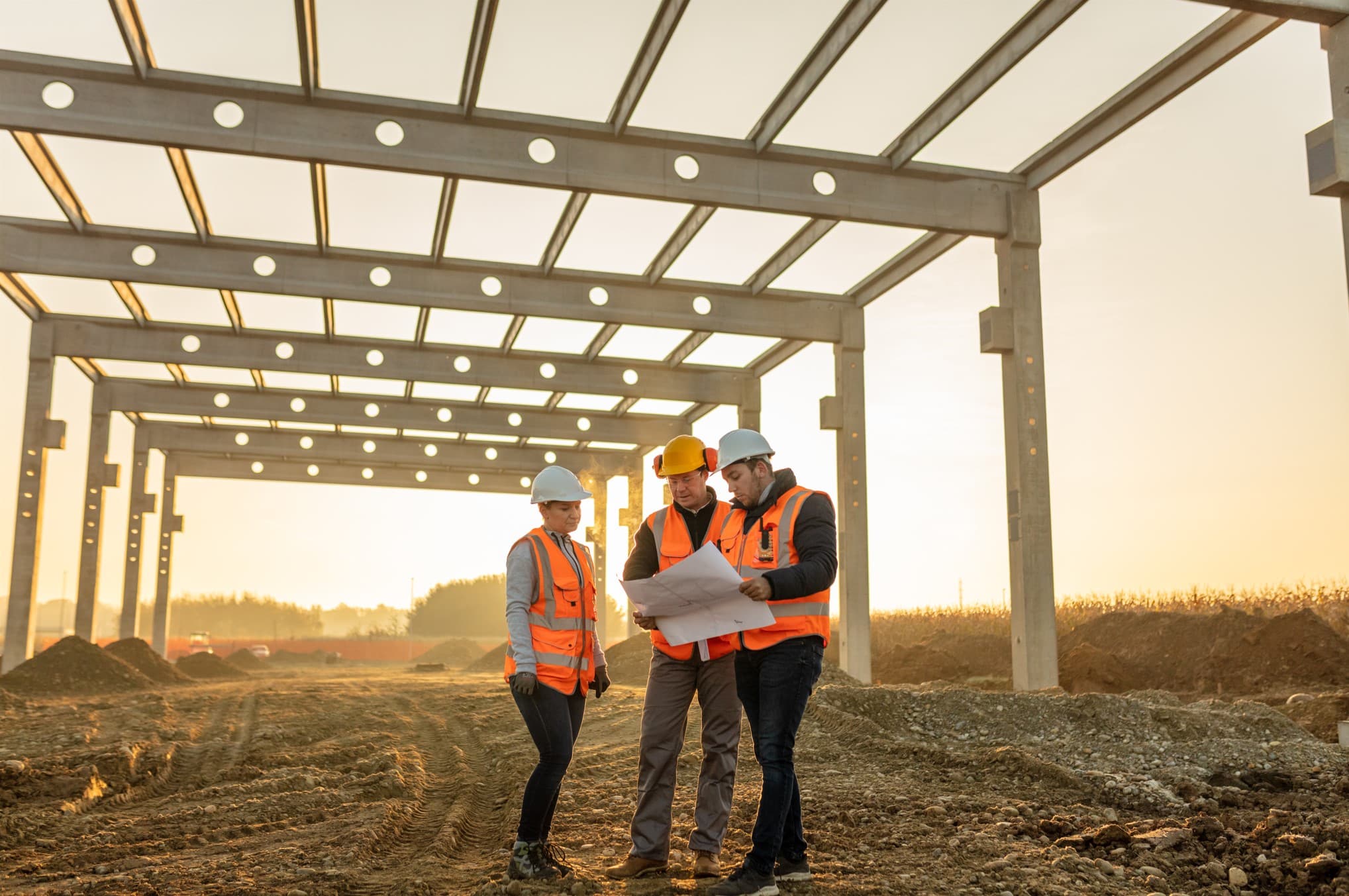Part 6 - Our guide to highest and best use in real estate
In part 6 of the property development feasibility series, learn what is the highest and best use, and how to do the appraisal & analysis for the acquisition, development, or valuation of commercial real estate.

Overview
“Location, Location, Location” has long been the mantra of real estate. And while location is important, if you don’t match a location with the best use of that location, significant value can be left on the table.
For example, the lot underneath a three-story walkup apartment building in midtown Manhattan may be much more valuable if a high-rise office building were built on the property. Likewise, a corn field may be more valuable than a large retail shopping center in a rural area with a small population. In this article, we’ll briefly discuss what is meant by “highest and best use.”
Because the appraisal industry has a formal definition and approach for determining the highest and best use of a property, we’ll start off by looking at the more formal aspects of the process, drawing heavily from definitions and methods developed by The Appraisal Institute.
We’ll then get into some potential applications of highest and best use to the acquisition, development, or valuation of commercial real estate.
Highest and best use, defined
According to The Appraisal Institute the highest and best use of a property is defined as: "The reasonably probable and legal use of vacant land or an improved property that is physically possible, appropriately supported, and financially feasible and that results in the highest value."
The Appraisal Institute has also defined a set of tests, known as "The Four Tests", that comprise the factors an appraiser must consider when determining the highest and best use of a property.
Each of these tests can potentially be a complex and detailed process, the details of which are beyond the scope of this article, but the concept of each should be straight-forward. The Four Tests are given below with brief explanations of each.
Legally permissible: Which use cases are permissible by law, zoning, and other land use regulations.
Physically possible: Constructing buildings on the side of a mountain or in a swamp probably aren’t possible
Financially feasible: Does the use case of the property suit the demographics and market of the area well?
Maximally productive: Does the intended use optimize the potential of the land?
Intuitively, these four factors make sense. If a potential use is not allowed by law and is not physically possible to construct on the given piece of land, then that use case will likely not serve as the highest and best use for that property.
Likewise, if the use of the property doesn’t fit well within the surrounding demographics and commercial activity it won’t be maximally productive, in which case a different use may realize more of the potential of the property.
As mentioned above, each of The Four Tests could require significant research and expertise to determine the outcome of the tests. Attorneys and/or land use experts may be needed to determine the legality of a specific use case for a property.
Engineers may be required to determine the suitability of the property for certain types of construction. And real estate experts will be involved in determining whether the property is financially feasible and maximally productive.
While each of these tests is important, the remainder of this article will focus on the financial feasibility of the property, with the assumption that the analysis is being performed to determine the potential for investment or development.
An important thing to note before we continue is that the determination of the highest and best use could require slightly different methods depending on whether the property is vacant or already improved. Below, we’ll touch on the distinction between the two, but we’ll attempt to describe the concepts more generally for use on either a piece of vacant land or an existing property.
Investment and valuation analysis
The financial feasibility of a property relies heavily on market analysis. Previous articles on market leasing assumptions and comparable property analysis provide a more in-depth explanation of how to perform detailed market analysis.
Regardless of the use case of the property, there are some important aspects of the market and the property’s place in the market that an analyst must understand well.
Many times, an analysis will focus heavily on current market conditions, but missing certain components of how the market might evolve over time could significantly increase the financial risk of a property over the hold period. Some of these factors are included below and described in more detail.
Market trends
Sales and leasing trends in both the market and submarket provide a lot of information about the health of the market. Factors such as occupancy, lease rates, and absorption are telling of the health of the leasing market, while number of sales, price per square foot, cap rates, and time-on-market trends give a good idea of how attractive the area is for investment returns.
Physical attributes
Physical obsolescence can be a major impediment in a property reaching its maximum potential. Whether that obsolescence is driven by a design that no longer serves the current demographic, a lack of technological capabilities, or some other reason, a property that no longer offers what the market demands does not achieve its highest and best use.
Locational attributes
As cities change over time, some locations will become more valuable while others become less valuable. The construction or improvement of new roads can change the access dynamics of a property.
A parcel of land off a major highway that was difficult to access might prove to be a perfect location for a new office park after a new access ramp was constructed. However, that very same access ramp that provides more convenient commutes to one piece of land could mean that another property becomes less attractive.
Current vs. potential performance
It’s also a good idea to analyze trends for multiple different property types to determine whether or not there’s divergence between them. For example, for many years the financial district in downtown Manhattan was home to numerous office buildings and headquarters to many companies.
Over the years, however, companies began to move to newer buildings in midtown Manhattan and the office market in the financial district began to decline. Developers then stepped in and began to convert the office buildings into residential properties.
While office rents and occupancy were declining, the residential market was improving significantly in the area. During this period the highest and best use changed from office use to residential use, highlighting the fact that current uses may not be the most valuable financial use for a property.
Competitive (or potentially competitive) sites
Often analysis is weighted heavily on current properties in the market. While existing properties definitely need to be factored into the analysis, sites (both vacant land and existing properties) need to be considered for their potential for development in the future. During real estate and construction booms, it’s not uncommon to see substantial new development of raw land.
The appraiser must consider whether or not there is equally or better suited land nearby for the same use case. For example, let’s say a firm purchases a suburban office building in an area with few office properties and healthy performance (stable occupancy), but the area also offers numerous pieces of vacant land that are suitable for office development.
If, at some point in the future, a development boom comes to the area and new office properties are developed, it could render the firms’ property in lower demand with more stiff competition.
Cost of modification vs. existing use
The previous factors (with the exception of market trends) could require a significant monetary outlay for redevelopment or repositioning of a property.
An analyst will have to determine whether the potential increase in value would exceed the cost of the modifications necessary to achieve the highest and best use of a property. In the case that the cost of modifications would exceed the increase in value, the current use would likely remain the highest and best use of the property.
Financial proformas
All of the information collected about a property should be used to estimate the financial performance by constructing discounted cash flows and calculating the potential value. It can then be determined if the property is achieving (or is close to achieving) the highest and best use.
Conclusion
The determination of the highest and best use sometimes requires a different and more in-depth approach than a straight-forward valuation, but can also lead to insights that an analyst might miss with a normal valuation approach.
And although definitive answers to some of the four factors used to determine the highest and best use may require the input of experts in other areas, an analyst should be aware of the necessary steps and consider each in their analysis.
About the author
Josh Panknin is a Visiting Assistant Professor of Real Estate at New York University’s Schack Institute of Real Estate and an adjunct professor in the school of engineering at Columbia University.
Prior to academics, Josh was Head of Credit Modeling and Analytics at Deutsche Bank’s secondary CMBS trading desk where he helped develop and implement automated models for valuing CMBS loans and bonds.
He also spent time at the Ackman-Ziff Real Estate Group and in various other roles in research, acquisitions, and redevelopment. Josh has a master’s degree in finance from San Diego State University and a master’s degree in real estate finance from New York University’s Schack Institute of Real Estate.
Author

Josh Panknin
Director, Real Estate AI Research & Innovation at Columbia University Engineering
Author

Josh Panknin
Director, Real Estate AI Research & Innovation at Columbia University Engineering
Resources
More on development feasibility




Jan 8, 2025
Part 4 - The trade-off between development feasibility software and spreadsheets


